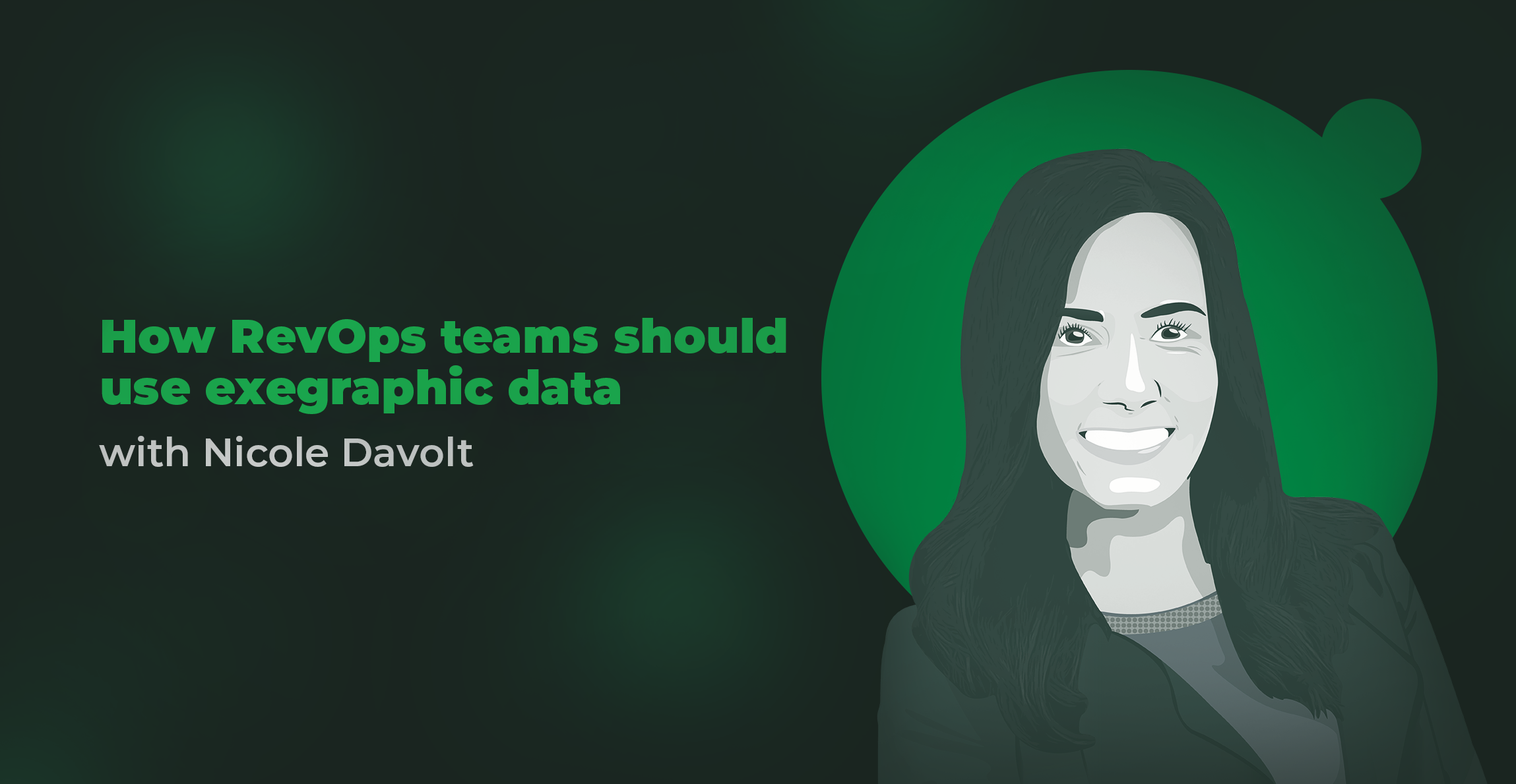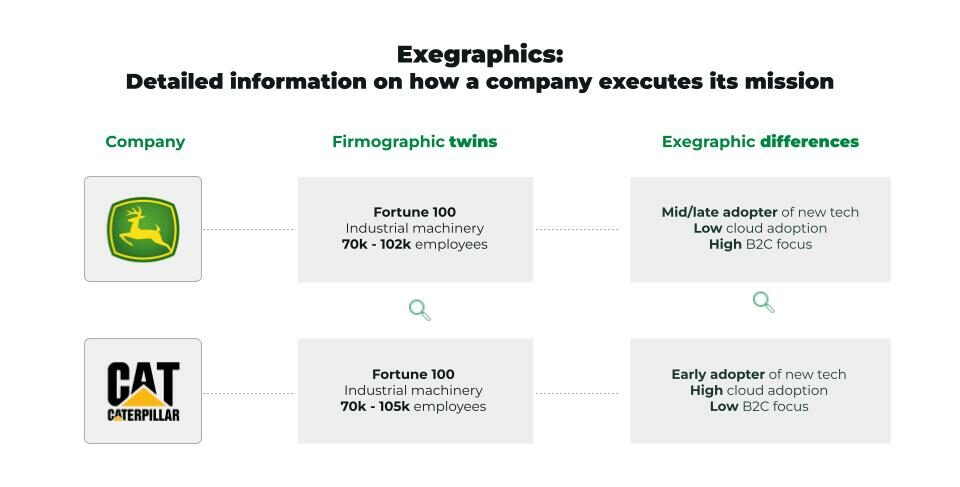Revenue Operations (RevOps) is a breakthrough application of data and automation. It’s gaining in popularity across all industries—and for good reason.
Winning organizations break down silos and optimize the flow of work across sales, marketing and customer success teams. RevOps has emerged as their key to achieving this enormous effort. In fact, According to Gartner, 75% of high-growth companies will have a RevOps model within the next two years. With a focus on alignment and collaboration, a RevOps framework reduces costs, improves customer experience and accomplishes the ever elusive goal of consistent, sustainable revenue growth.
In short, RevOps is the intersection of data-driven and customer-centric revenue generation. Leaders who understand and are able to implement a RevOps framework realize their company’s revenue goals through integration of processes, data and technologies across teams.
The benefits of RevOps
Streamlined processes across key teams with improved data analysis and automation deliver powerful, actionable insights into customer behavior, helping organizations find and tap new revenue streams.
Benefits of RevOps include:
- Improved collaboration
- A unified approach to revenue generation
- Reduced inefficiencies
- Increased productivity
- Customer satisfaction
- Accountability
A RevOps framework enables organizations to crush revenue goals, increase customer retention and improve overall business performance.
The elements of a RevOps framework
Every RevOps framework contains four key elements: People, processes, technology and data.
People are the core of every revenue operations team. From leaders to specialists, all are responsible for implementing a RevOps framework. They should be able to develop and execute a cohesive strategy that aligns with the company’s overall goals and objectives.
Developing and refining processes across all revenue-related functions will increase efficiency and effectiveness. In RevOps, these processes belong to different departments, often including sales, marketing and customer success.
Advancements in technology have produced sophisticated RevOps software. Use it! Your tech should help you exchange data, segment your audience and/or automate workflows. Integrating various technologies such as CRM, marketing automation, and customer success tools will streamline and optimize revenue operations.
Finally, being able to collect and analyze data is critical to making informed decisions under a RevOps framework. RevOps relies on key performance indicators (KPIs) and metrics that track revenue growth, customer acquisition and retention.
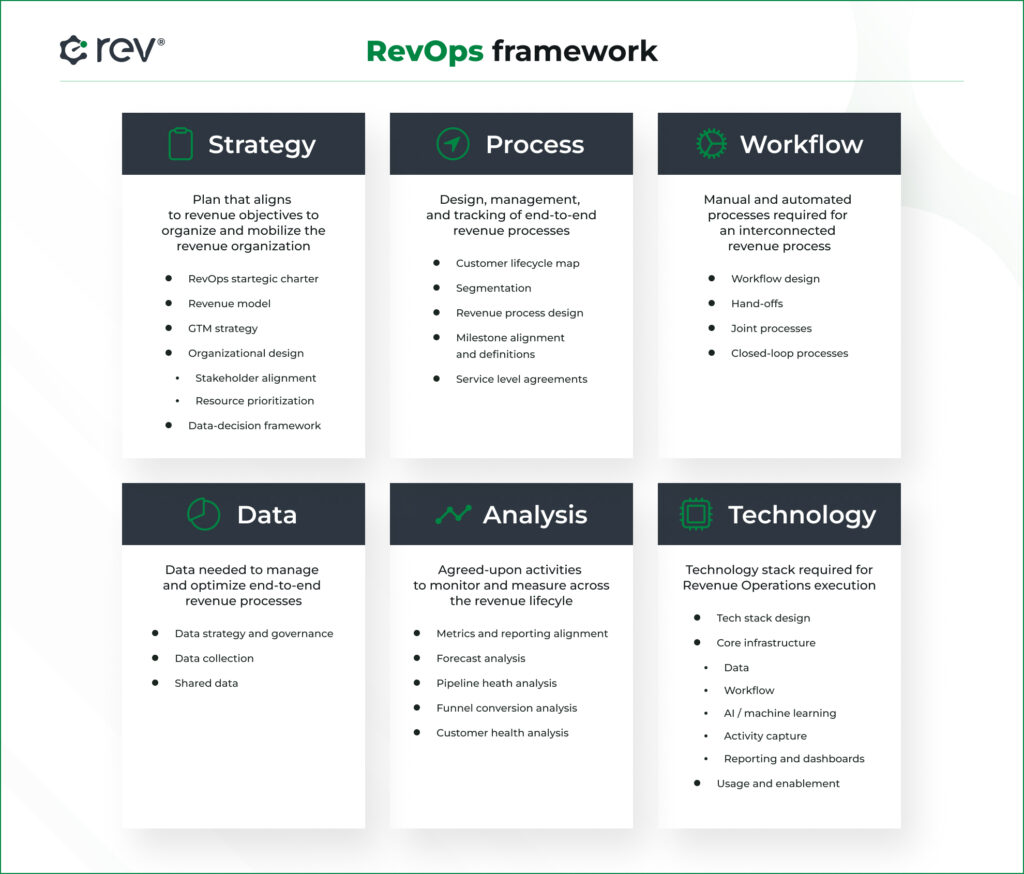
Waterfall vs. agile models
Project management methodologies waterfall and agile can be applied to RevOps frameworks, Waterfall being a traditional, sequential approach and agile being the more iterative approach involving continuous collaboration, adaptation and improvement.
The time-saving advantages and emphasis on collaboration may make agile a good fit for your RevOps framework, although ultimately, the choice of framework will depend on the specific needs and requirements of your organization, as well as industry, size and revenue goals.
The different frameworks
Several RevOps frameworks have emerged recently, each with its own approach to optimizing revenue-generating functions within an organization.
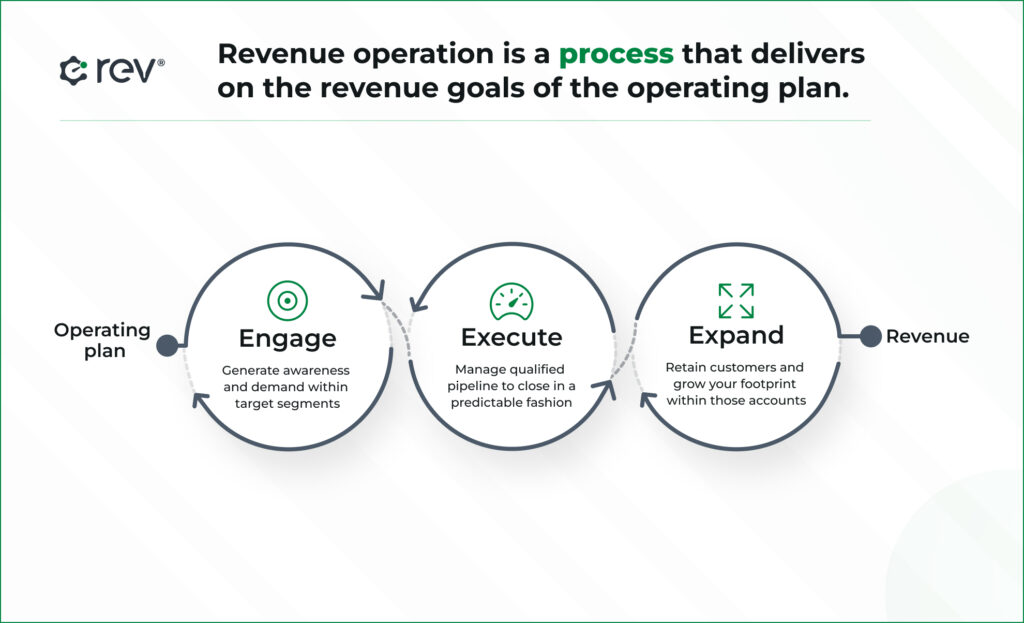
The Clari RevOps framework, for example, is a waterfall model that helps GTM teams take control. It focuses on four key pillars: revenue process optimization, connected intelligence, dynamic forecasting and collaborative execution. The Clari RevOps framework also includes a set of best practices, tools and technologies to help organizations implement their strategy, including data management and analytics tools, AI-powered forecasting and pipeline management, and integrations with other sales and marketing tools.
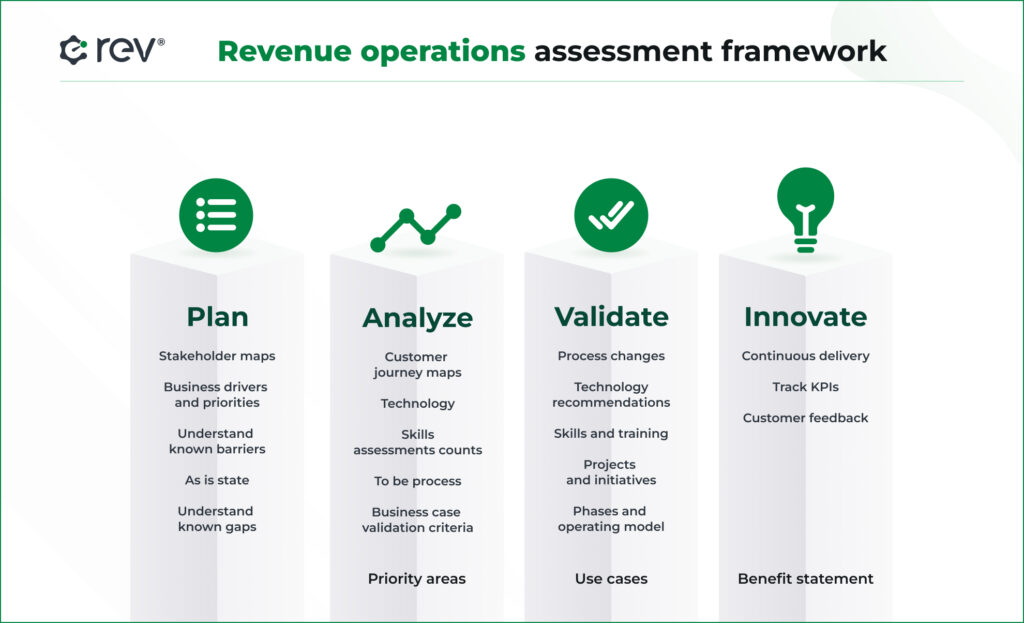
Oriented toward aligning people, process, platform and insights for revenue acceleration, the McAlign framework is another that seeks to unify sales, marketing, customer success and revenue operations under one strategy. This agile model boasts an ability to mine processes, track the customer life cycle, optimize customer journeys and create unified revenue funnel view across various revenue functions.
How to apply a RevOps framework
You know you need a RevOps framework to align fractured processes, tools and teams across your company. There are many approaches to growing this muscle within your organization, but these basics will get you started while you gather a holistic view of your revenue growth and determine (or design!) the best framework to suit your needs.
- Step 1: Define goals and responsibilities. This could include optimizing revenue-generating processes, improving sales and marketing alignment, and managing customer experience.
- Step 2: Identify necessary roles and skills needed to meet those goals. This could include roles such as revenue operations manager, sales operations manager, marketing operations manager, customer success operations manager or data analyst.
- Step 3: Determine a reporting structure. Some organizations may choose to have the team report directly to the CEO, while others may choose to have the team report to the VP of Sales or another executive.
- Step 4: Establish collaboration between revenue-generating teams to align goals, processes and metrics. These may include sales, marketing, customer success, etc.
- Step 5: Leverage technology and data. Your team should have access to tools and technologies that enable efficient and effective analysis of revenue-generating activities.
- Step 6: Agree on metrics and KPIs (given the data and skills available on the team) that align with the organization’s revenue goals. Regularly report progress.
Get your RevOps framework up and running
A RevOps framework aligns and optimizes the revenue-generating functions within an organization. It’s the proven way to equip the right people with the data and technology to streamline their processes, make the right decisions for your customers and drive predictable revenue growth.
Advancements in data analysis and automation will continue to supercharge RevOps models in the years to come. As you can imagine, the deeper the insights you have into your customers’ behavior and readiness to purchase, the stronger your RevOps foundation becomes, allowing for even more efficiencies and profits to be gained during revenue growth activities.
Just as B2C companies have moved from demographics to psychographics, B2B needs to shift from firmographics to exegraphics—dynamic data that reveals how a company executes on its mission. Want to see the exegraphics behind your best customers so you can uncover their hidden traits and target others just like them? Contact us, and we’ll show you.





